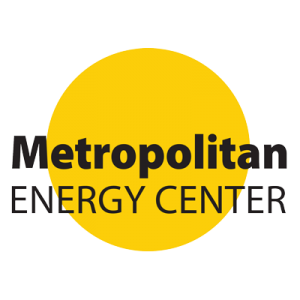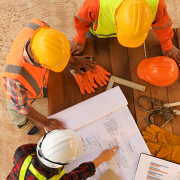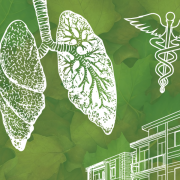Metropolitan Energy Center (MEC) is proud to announce its partnership with the City of Kansas City, Missouri and the Building Energy Exchange (BEEx) in a groundbreaking initiative to improve energy efficiency across the city’s building stock. The multi-year project will lay the foundation for establishing Building Performance Standards (BPS) in Kansas City, Missouri, ensuring that local buildings meet modern energy efficiency requirements.
Building Performance Standards require building owners to benchmark their energy usage, a critical first step in identifying energy-saving opportunities. St. Louis has already set a precedent by enforcing BPS, requiring building owners with Energy Use Intensity (EUI) scores below the standard threshold (52/54) to develop and implement improvement plans within 2-3 years.
The City of Kansas City, Missouri aims to follow suit by developing its own BPS policy, which will be proposed to the City Council at the project’s conclusion. The City of Kansas City, MO, with MEC and others, is also taking measures to provide training and jobs for those involved in implementing energy-saving upgrades.

“This initiative is a crucial step forward in creating a more sustainable and resilient Kansas City,” said Mary English, MEC’s Building Performance Program Manager. “By setting clear standards and offering support to property owners, we can significantly reduce energy waste, lower utility costs, and improve the occupancy health and quality of life for all Kansas City residents.”
MEC will play a pivotal role in this project by assisting the City of Kansas City, Missouri with policy development and stakeholder engagement. One of our key objectives is to conduct commercial building energy assessments, a critical task in identifying “low-hanging fruit” opportunities for energy savings at low or no cost. This critical step will dovetail with helping integrate benchmarking data into the City’s software, analyze building performance, and recommend cost-effective strategies to meet the proposed EUI threshold.
The City of Kansas City, Mo. aims to collaborate with property managers and owners to establish reasonable EUI benchmarks and identify the most efficient, cost-effective measures to achieve these standards, supporting their broader goal of improving energy efficiency across the city. By the end of the project, the City of Kansas City, Missouri aims to propose a BPS policy that sets clear energy efficiency goals and provides the tools and support necessary for compliance.
“We encourage all building owners and property managers to actively engage with us during this process,” English added. “Your input and participation are vital to shaping a policy that is both effective and practical. Together, we can make Kansas City a leader in energy efficiency and sustainability.”
This initiative aligns with MEC’s mission to enhance resource efficiency, environmental health, and economic vitality in the Kansas City region and beyond. By setting the groundwork for Building Performance Standards, Kansas City, Missouri is taking a significant step toward a cleaner, greener, and more resilient future, advancing the city’s carbon neutrality goals for 2040.
Get Involved: Building owners and managers are encouraged to join upcoming public consultations and information sessions hosted by MEC and BEEx. Visit www.metroenergy.org/energy-solutions-hub or contact Mary English at 816-531-7283 for more details on how you can participate and stay informed.
About Metropolitan Energy Center: Metropolitan Energy Center is a non-profit organization based in Missouri, established in 1983. By leading the responsible use of natural and economic resources, MEC’s work benefits communities through increased energy efficiency, environmental sustainability, and economic prosperity. MEC works so that the benefits of clean energy use are available to all people. Our mission is to create resource efficiency, environmental health, and economic vitality in the Kansas City region and beyond. Find out more about our work at www.MetroEnergy.org.
Discover how Kansas City pioneered streetlight EV charging, boosting equitable access and electrification. Learn about the project’s key partnerships, outcomes, and how the project fits within the city’s ambitious climate goals.
Metropolitan Energy Center (MEC) is committed to advancing resource efficiency, environmental health, and economic vitality in the Kansas City region and beyond. Since 1983, we have consistently provided resources, outreach, and training to promote alternative fuels and energy efficiency. These efforts are aligned with our role as the host of the Kansas City Regional Clean Cities Chapter, a coalition that supports the national goal of strengthening America’s environment, energy security, and economic prosperity through clean transportation initiatives.
The Story Behind the Breakthrough
The Streetlight Charging pilot project (EVST) began as a collaborative effort between MEC and the City of Kansas City, Missouri. The project aimed to install limited electric vehicle (EV) charging stations on existing streetlight infrastructure to test and demonstrate the benefits of curbside charging for plug-in EVs. The City initiated the program in 2019, with the intention of examining how increased access to EV charging infrastructure might impact EV adoption rates.
The project originated from the growing interest in curbside charging, an untapped market at the time. The existing infrastructure facilitated the project’s feasibility. After conceptualizing the project, MEC sought the right partners to bring it to life. The Department of Energy (DOE) provided the necessary funding through a competitive grant awarded to MEC. The DOE oversaw the project’s development and coordinated the administration between the various organizations involved. A key partner, the National Renewable Energy Laboratory (NREL), managed the reporting requirements, including deliverables and quarterly reports. As the project nears completion, MEC is working with NREL to finalize the final report. These partnerships with DOE and NREL were critical to the project’s success, bringing expertise and oversight that ensured the project’s smooth progression and ultimate success.
Planning for the project began in early 2019. MEC collaborated with the City of Kansas City, Missouri, and Evergy, the local utility company, to identify optimal locations for the streetlight charging stations. Initially, many sites were considered, but only 23 locations met the stringent criteria for installation. Factors such as the availability of street parking, existing infrastructure, installation costs, and compliance with code requirements influenced the final site selection. Installation of the EVSE equipment began in 2021 and was completed recently, marking a significant milestone not just for Kansas City but for the nation, as this was the first project of its kind to be successfully implemented.

Street Light Charging Station installed at N Granby Apartment complex in Kansas City, Missouri, one of the 30 locations chosen for street light charging installation.
Over the past four years, MEC and its partners diligently worked to select the most suitable locations out of hundreds of proposed sites. The 23 installed stations were strategically distributed across different districts to ensure equitable access across various communities, particularly those historically overlooked in infrastructure developments. The project’s focus on equity was paramount, with an emphasis on not concentrating stations in any single area. The increased availability of EV infrastructure is expected to encourage broader EV adoption across diverse communities.
Pioneering Urban Solutions for a Green Future
Kansas City’s commitment to electrification extends beyond this pilot project. The city recognizes the urgency of addressing climate change and has made significant strides toward electrification as a response to this global challenge. In 2021, Kansas City committed to ensuring that all municipal vehicles would be electric where available, with the Kansas City Fire Department’s fleet going fully electric by 2023. Over the past 15 years, the city has reduced greenhouse gas emissions by 25% and partnered with various stakeholders to enhance the resilience of its infrastructure.

The Climate Protection and Resiliency Plan, as drafted by Mayor Quinton Lucas, outlines a comprehensive strategy to achieve a carbon-neutral, equity-focused, and resilient Kansas City by 2040. The plan is built on six key Climate Action Sections, with climate justice at its core, and integrates community resilience, financing and innovation, and community empowerment throughout. The energy supply, homes and buildings, and mobility sections of the plan are particularly relevant to the transportation industry, as they chart a path toward reducing emissions through alternative fuels, local carbon dioxide removal, and direct carbon capture.
Regarding emissions reduction, the city has set ambitious targets to align with its carbon neutrality goal by 2040. Emissions are measured in metric tons of carbon dioxide equivalent (MTCO2e), which accounts for the impact of all greenhouse gases relative to CO2. The city aims to reduce emissions to 7 million MTCO2e by 2025, 4 million MTCO2e by 2030, with a stretch goal of achieving zero carbon emissions by 2040.
Results
The collaborative efforts with community-based organizations and nonprofit groups played a crucial role in the success of the Streetlight Charging project. Organizations such as EVNoire and Westside Housing Organization were instrumental in providing community engagement and outreach, ensuring that the project was developed with input from historically marginalized populations. These partnerships were vital in shaping the project’s direction and ensuring that it met the needs of the communities it aimed to serve.
Outputs and Outcomes: As of March 27, 2023, all 23 charging stations have been installed on streetlight systems throughout the city, enhancing the accessibility of public charging infrastructure in previously underserved areas. The project not only added new public charging stations but also catalyzed the electrification of the city’s fleet and stimulated an increase in EV purchases. Data collected from each station since the project’s inception helps MEC and its partners understand usage trends and the value these stations bring to Kansas City’s electrification goals.
Positive feedback has been received from the communities where the stations were installed. A Ribbon Cutting ceremony, attended by the City Manager and Council members, celebrated the project’s success and MEC’s efforts.
The outcomes of the project are still being studied, with ongoing data collection and community meetings providing insights into how the installations have influenced attitudes toward EVs. One notable success story is that of a community member who purchased an Electric Vehicle shortly after a station was installed near their residence.
Best Practices & Lessons Learned: This project exemplifies the importance of collaboration between MEC, KCMO, and other partners in site selection and community engagement. One of the key lessons learned was the complexity of site selection for streetlight chargers, which involved navigating multiple code requirements and aligning with existing utility infrastructure. The collaborative approach, involving regular discussions with Evergy, KCMO, and NREL, proved essential in identifying the most suitable locations for the chargers.
Engaging the community throughout the project was crucial. Ensuring that all voices were heard and considered was key to the project’s success, as it directly impacted the surrounding community and benefited external stakeholders who may also utilize the infrastructure.
Download the Brief
Get Involved in Community Action

Acknowledgements
Many thanks to the partners who made this project possible:

This material is based upon work supported by the U.S. Department of Energy’s Office of Energy Efficiency and Renewable Energy (EERE) under the Award Number: DE-EE0008474.
KANSAS CITY, MO (April 25, 2024)
Amid the rising steel frames and freshly poured foundations of Kansas City’s bustling construction sites, a pressing debate has emerged over the true cost of building to the city’s newly updated energy code. While one vocal local professional association has recently been speaking publicly about staggering $30,000 average per-home cost increases due to updated building codes, ongoing code compliance work by building professionals partnered with Metropolitan Energy Center (MEC) has revealed more grounded estimates of about $10,000 in increased costs.
This stark contrast raises questions about the real economic impact of these codes on housing affordability, commercial building costs, and construction pace. Public complaints that the recent code update has led to a permits backlog and a construction slowdown do not tell the whole story. In fact, current codes provide builders and contractors with multiple shovel-ready paths to affordably meeting codes requirements.
Most of the complaints are focused on only one choice for compliance — the strict Prescriptive Path. But that choice is not the only one. Metro-wide today, builders and contractors also use the Performance Path. This customizable option not only follows all recently updated building codes, it also has long provided an efficient and affordable way forward for new and existing construction projects.
The Performance Path option was developed in earlier iterations of International Energy Conservation Code (IECC) and is currently used by cities and counties across the metro and the state of Missouri. Projects use it to inexpensively tailor solutions that will achieve better Home Energy Rating System (HERS) scores. A building’s HERS score reflects its ability to affordably maintain good occupant health and comfort.
Existing Homes Can and Do Meet Code
The Performance Compliance Path isn’t only for new construction. Builders and contractors often upgrade existing building stock that also must meet updated codes. Mary English, Program Manager for building sciences at MEC, explains the need for this additional focus. “The majority of the Kansas City region’s residential units are in buildings constructed before the latest energy standards were conceived — therefore, retrofitting existing homes is equally important to improve overall public health. And there are very robust federal funds available to help pay contractors to do this work both in new construction and retrofits.”
Existing property renovation can be more cost-effective than new construction. Even for retrofit projects, the Performance Compliance Path provides a practical, affordable way forward for builders and contractors. By improving older homes, contractors in the Kansas City region can make significant strides toward improving public health, while achieving smaller building carbon footprints.
Dual Approach Means Healthier Residents
Builders and contractors are Kansas City’s heroes when they build energy-compliant new buildings and upgrade existing ones. These structural experts can prevent future occupant health problems and increase indoor comfort levels.
Energy efficient buildings lead to good health. This concept is now widely accepted in the healthcare industry. A recent joint study by MEC and Children’s Mercy Kansas City indicated that asthmatic children living in energy-efficient homes experienced significantly fewer asthma-related medical emergencies. When building standards are followed, Kansas City residents have healthier living environments and lower healthcare costs.
“Contractors who use the Performance Path can achieve great building quality, which in turn reduces long-term building occupancy costs,” said Kelly Gilbert, Executive Director of MEC. “It’s a strategic approach to ensuring that Kansas City’s new and existing structures are affordable, energy efficient, and healthy for everyone.”
About Metropolitan Energy Center:
Metropolitan Energy Center is a non-profit organization based in Missouri, established in 1983. Through community partnerships and business relationships, MEC supports energy conservation projects that build resource efficiency, environmental health, and economic vitality. The organization provides extensive resources about rebates, tax credits, and financial assistance to anyone looking to upgrade a property. They want to see the benefits of building performance accessible to all people.
Sign up for our newsletter to stay up-to-date on industry news, funding opportunities, and more.
Nine out of ten breaths are taken indoors. It’s time we see efficient buildings as a key component to human health. Our children’s health and lives literally depend on it.
written by Mary A English
What is the first piece of technology that pops into your head when you think of energy efficient buildings? Is it solar panels on the roof? That is a common answer.
Solar panels can be a freeing option for consumers that need a little more room in a tight household budget or want to make clean power, but solar panels do not make for energy efficiency per se. Solar panels provide energy generation. Efficiency is another word for conservation, which is the practice of making a building use less energy. Indeed, the cleanest energy is energy that we never use. There’s a lot of never-used energy involved when a building performs well.
Since joining the building performance industry in the mid-aughts – roughly sixteen years ago – I have seen firsthand how inefficient building features can lead to many painful problems in both residential and commercial buildings. Efficient building features, however, always seemed to lead to improvements in the lives of people who regularly used those buildings. One example of an energy efficient building feature is air sealing, which reduces drafts and heat loss by eliminating air leaks in the building around the chimney, plumbing penetrations, and recessed lights.
The Impact of Inefficient Building Features
Through the years, it became increasingly evident to me that building conditions are not the same across all areas of our metro. I realized that the benefits of energy efficiency need to reach a broader audience. But making that happen presented a challenge.
For building performance professionals there are four benefits of energy conservation that we can recite in our sleep: affordability, durability, comfort, and health. Comfort is usually the reason an energy professional is called by a homeowner to help. (Do you have a bedroom over your garage that is constantly hot in the summer; and cold in the winter, for example?) Affordability means that the cost of energy efficient upgrades can only be a reality for some customers. While all four benefits are important, it is the last one—health—that is most critical, yet services are not always achievable for those who desperately need that benefit.
The importance of energy upgrades for health is shown time and again, as more studies are done on the intersectionality of human health and building efficiency. With each study it is becoming clearer that our inefficient buildings may be the cause of much that physically ails humans—especially children.
A Case Study: The Link Between Weatherization and Childhood Asthma
One of these studies was published this summer by MEC in cooperation with Kansas City’s own Children’s Mercy Hospital (CMH) and the University of Missouri – Kansas City (UMKC).[1] The results of the study indicate that weatherizing a home improves the health of children living in that home. Possible reasons could be that breathability of outdoor air matters, especially when that air comes inside, or that mold grows more commonly when outside air meets the air conditioned inside. Either way, something causes improvements in childhood asthma when a home is weatherized.
The research team used data from the wave of weatherization work MEC managed after passage of The Recovery Act in 2009. Most of the weatherization work done involved air sealing, insulation of the basement’s rim joist, and other energy efficiency improvements such as sealing around windows and doors (Wilson et al. 2023). During data analysis, CMH protected the personal identities of children and families, and economists from UMKC merged the MEC weatherization data with CMH childhood asthma data from the same homes to see if there was a significant link that changed the number of cases of childhood asthma in weatherized homes.
Then the research team compared that with a control group of homes constructed in all eras, even past 1983 (Wilson et al. 2023). This detail is a sign of good study design because most people think that homes built after 1983 complied with modern codes and were more energy efficient, but for most of our region’s municipalities, this is an incorrect assumption. The combined dataset was made up of single-family homes within Kansas City, MO city limits.
The strong correlation revealed in the results of this study turned out to be stunningly significant. The team’s analysis found that the weatherization program “reduced the frequency of pediatric asthma encounters for those children diagnosed with asthma residing in homes that received energy efficiency improvements” (Wilson et al. 2023). The difference between the weatherized set of homes and the control group where no weatherization was executed was a 34% reduction in hospital visits for asthma.
For building performance professionals who work in the field on existing buildings, this may not be surprising. Mold in energy deficient areas of buildings is not uncommon, for example. However, the significance of that statistic—the 34% of children who suffered less because of the energy efficiency upgrades—exceeded expectations for yours truly.
Implications for Policy and Codes
What do we do with this information? Well, first, good science means that this study will need further review. We have a strong correlation of reduced frequency and intensity of asthma attacks after weatherization, but more digging will need to be done by scientific peers to corroborate; and then to determine causation. Is the improved health because better insulation and air sealing keeps out poor outdoor air, like ozone? Or is it because it cuts down on condensation points (which can grow mold if undetected) that can occur when extreme weather seeps into buildings with conditioned air? We need answers. We at MEC hope this leads to further study.
In the meantime, however, this study supports those that advocate for better energy efficiency in our built environment. Policymakers can be assured that any improved codes policy—such as the passage of the 2021 International Energy Conservation Code (IECC) in Kansas City, MO—is justified. And bonus! The timing of this report publication dovetails nicely with the rebates available to weatherize homes through the Inflation Reduction Act (IRA). It is up to those of us in the industry to guide consumers towards best practices as our region updates its buildings.
Addressing Renters and Existing Buildings
This is true especially when you know that roughly half of our residents in the entire metro are renters. A common counter from those opposed to more robust energy efficiency laws has been that only a few people want it, and those people can pay for energy efficiency in their new homes. Contrasting against that sentiment, this report begs a new question. Are renting families who have zero power over the energy features of their home to be left out of affordability, durability, comfort, and health?
And what about the home buyer that assumes the law protects them from inadequate construction practices across the country? The data shows that the codes followed in the era when the residential structure was built had no discernible effect on the impact of weatherization on asthma cases. Unfortunately, codes have not protected citizens in all cases. However, the evident strong correlation in this study made it clear: weatherization means fewer severe asthma attacks and generally less intense asthma incidents.
In Kansas City, MO, we are on the right track with a robust energy code passed in 2022 to protect consumers, at last, for new home construction. We now need to apply what we have learned in the existing buildings market. Training contractors on energy efficiency’s human impacts should be an industry priority. (We at MEC hope that other municipalities in our metro follow the City of KCMO’s lead as well.)
In summary, better energy efficiency leads to better health in the home. What, as a society, are we going to do now that we know? Do we ask car buyers to pay extra for seatbelts? No, they are mandatory because they protect the passengers. We shouldn’t ask residents to pay extra for healthy lives brought about through energy efficient buildings.
[1] Wilson N, Aloumon C, Tauheed L, Kennedy K. 2023. The Impact of a Weatherization Program on the Health Outcomes for Children with Asthma. Metropolitan Energy Center. [accessed October 23, 2023]; https://metroenergy.org/wp-content/uploads/2023/07/Health-Impacts-of-EWKC-Program-Activities.pdf
About Us
Metropolitan Energy Center (MEC) is a 501(c)(3) nonprofit organization. Our mission is to create resource efficiency, environmental health, and economic vitality in the Kansas City region – and beyond. Learn more about us and our programs.





 2025 MEC
2025 MEC


